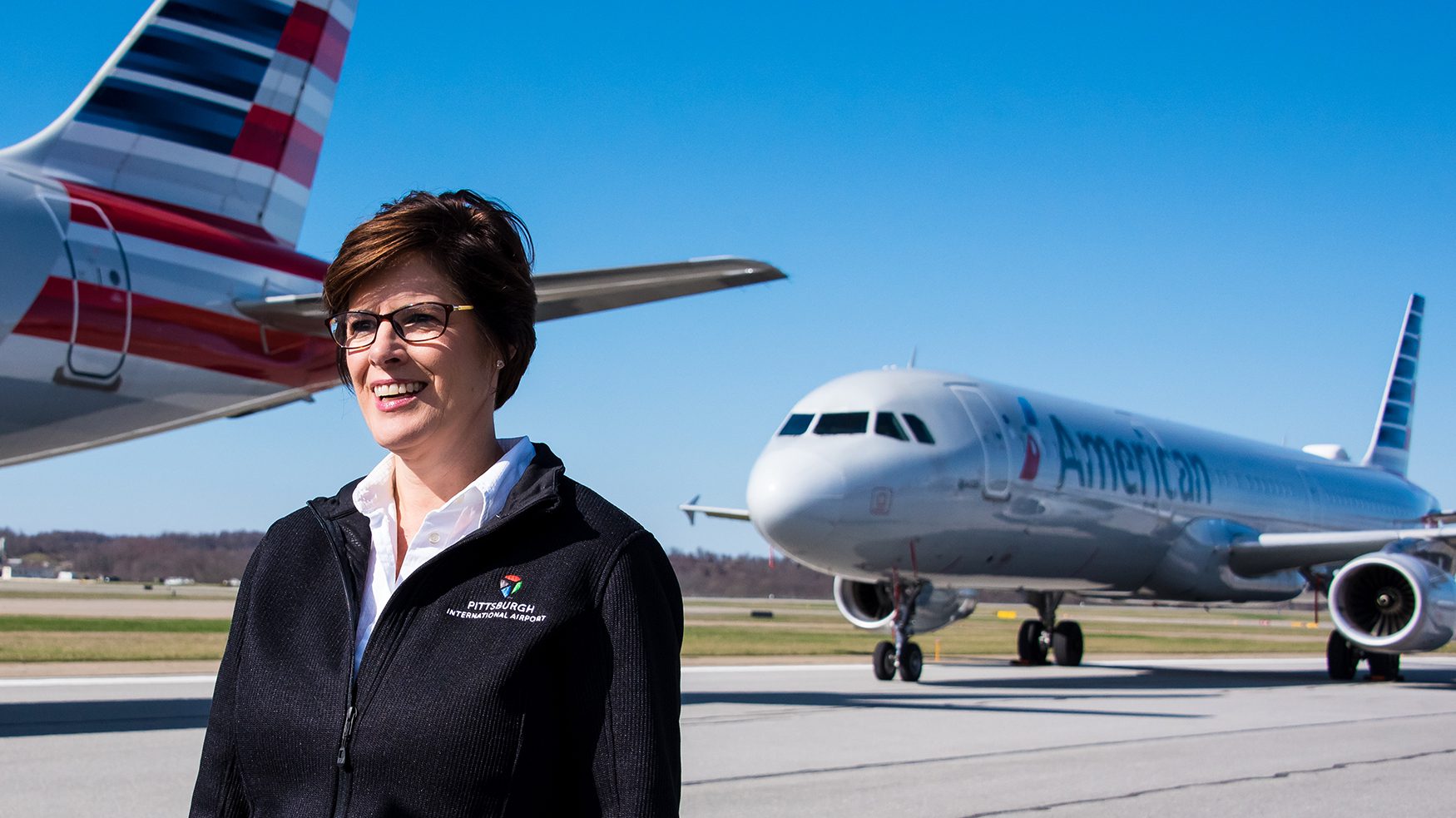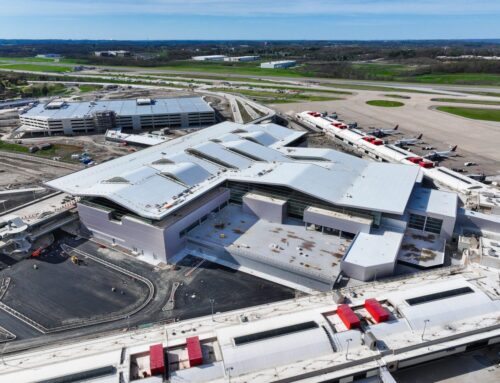State of the Airport: Forging a Post-Pandemic Future
PIT CEO shares her vision for Pittsburgh's airports right now—and what's next
By Christina Cassotis
Published March 15, 2021
Read Time: 4 mins

Editor’s Note: Christina Cassotis is the CEO of the Allegheny County Airport Authority, which operates Pittsburgh International Airport and Allegheny County Airport.
For many of us, 2020 seemed like a year without end. It was a time of tragedy and grief, with friends and loved ones lost to an unforgiving global pandemic. For some, it meant lost jobs, closed businesses and shelter-in-place orders.
And if you happen to work in the travel industry, as I do, 2020 was a year of vacant hotel rooms, grounded airplanes and empty airports.
WATCH: Christina’s appearance on ‘Dateline’ pandemic special
But as we mark the one-year anniversary of the pandemic, with encouraging news of vaccine rollouts and a declining infection rate, many of the changes imposed by COVID-19 are benefiting our industry and customers alike—and will aid in our recovery.
We’ve come quite a distance already. Early in the pandemic, passenger traffic fell by 96 percent, with revenue losses not far behind. And while we’re only about halfway back to pre-pandemic levels, there are many reasons for optimism in our industry, and in my particular corner of it, at Pittsburgh International Airport.
Let me tell you why, in this “safe distanced” version of my annual State of the Airport message.
Airports across the world are rebuilding their air service portfolios, and competition will be fierce for limited seats in a scaled-down industry.
But, we’ve done this before, and we’ll do it again.
After losing our hub, we reinvented ourselves into one of the nation’s top origin and destination airports. We have strong relationships with our longtime airline partners, who are already making plans to rebuild their schedules.
We’re focused on the growth of ultra-low cost carriers, which are opening new destinations for leisure travelers, including a Pittsburgh first: Allegiant Airlines’ new non-stop service to Key West, beginning in June.
Business travel will come back slower, but it is quietly recovering. I can see it on our front curb, as business visitors climb into taxis to take them downtown, and at our security checkpoint, which fills up early on weekday mornings.
The number of passenger seats departing PIT grows almost every week and is up by more than 20,000 since mid-January. Even more important is the transformational work we’ve done inside and outside our airport.
Safety and security are an airport’s stock-in-trade, but the pandemic required us to add a third priority: public health. We started by taking care of our own people. If we can’t keep ourselves healthy, our airports can’t run.
Long before the pandemic, we were busy designing a new, future-forward airport terminal. The coronavirus delayed our construction schedule, but the pause allowed us to bring in public health experts to improve our design.
We are building an industry-leading example of what a post-pandemic airport looks like. Construction is expected to begin this year, employing people who reflect the community we serve.
Since the start of the pandemic, we have been testing and incorporating many of these advancements, in three primary areas:
Our personal space. Social distancing is now the norm, whether at security checkpoints or gates. We’re exploring a plan for digital queuing at the TSA checkpoint to improve the pre-security experience.
And we’re piloting touchless technology, from wave-to-call buttons for elevators, ticketing kiosks that talk to your smart phone and concessions that never require a touchpoint.
How we clean. There was a time when airports worked hard to keep their facilities clean but keep their airport cleaners out of sight. No more. People want to see visible proof of our enhanced cleaning techniques and be assured that our team is constantly on the job. They are.
Last year, our partnership with Carnegie Robotics introduced autonomous floor scrubbers that employ UV technology, a first for a U.S. airport. The four robots, named after aviation pioneers, are such a presence in our airport that travelers seek to have their photos taken alongside them. We’re exploring other ways to use artificial intelligence and robotics to clean our facility better and more efficiently.
The air we breathe. Tech giant Honeywell is developing a dashboard that will allow us to monitor, identify and correct problems with air quality issues as they occur. Too much carbon dioxide inside the terminal tells us we need to increase air flow or ease overcrowding. Honeywell and other innovators have taken up residence at xBridge, our new tech incubator at the end of Concourse B.
As part of our healthy design, our new terminal will include outdoor terraces to provide fresh air and outdoor space before and after security—a rarity for airports.
We’ve been busy outside the airport, too. Neighborhood 91, part of the 195-acre Pittsburgh Airport Innovation Campus at the west end of our property, is the world’s first development that connects all the components of additive manufacturing, including 3-D printing, into one production ecosystem.
Wabtec, a global Fortune 500 company based in Pittsburgh and founded by famed inventor George Westinghouse, is setting up shop in an 11,000-square foot building on the property. Others will follow this spring.
A first-of-its kind microgrid will power the airport via onsite natural gas wells and solar panels. And construction of our new 75,000-square-foot cargo processing facility will expand the air cargo operations that became such a critical part of our COVID-19 response.
Above all, let’s not forget Pittsburgh itself. Before the pandemic, this region was in the midst of a renaissance, with people coming from all over the world to do business and conduct research, to study and yes, to visit.
Anyone who knows Pittsburgh knows you can’t keep this region down for long. There’s too much energy and far too much momentum. There are simply too many reasons to come here, and too many other places people here want to go.
Our airport is the front door to this magnificent region, and we’re ready for right now—and what’s next.






